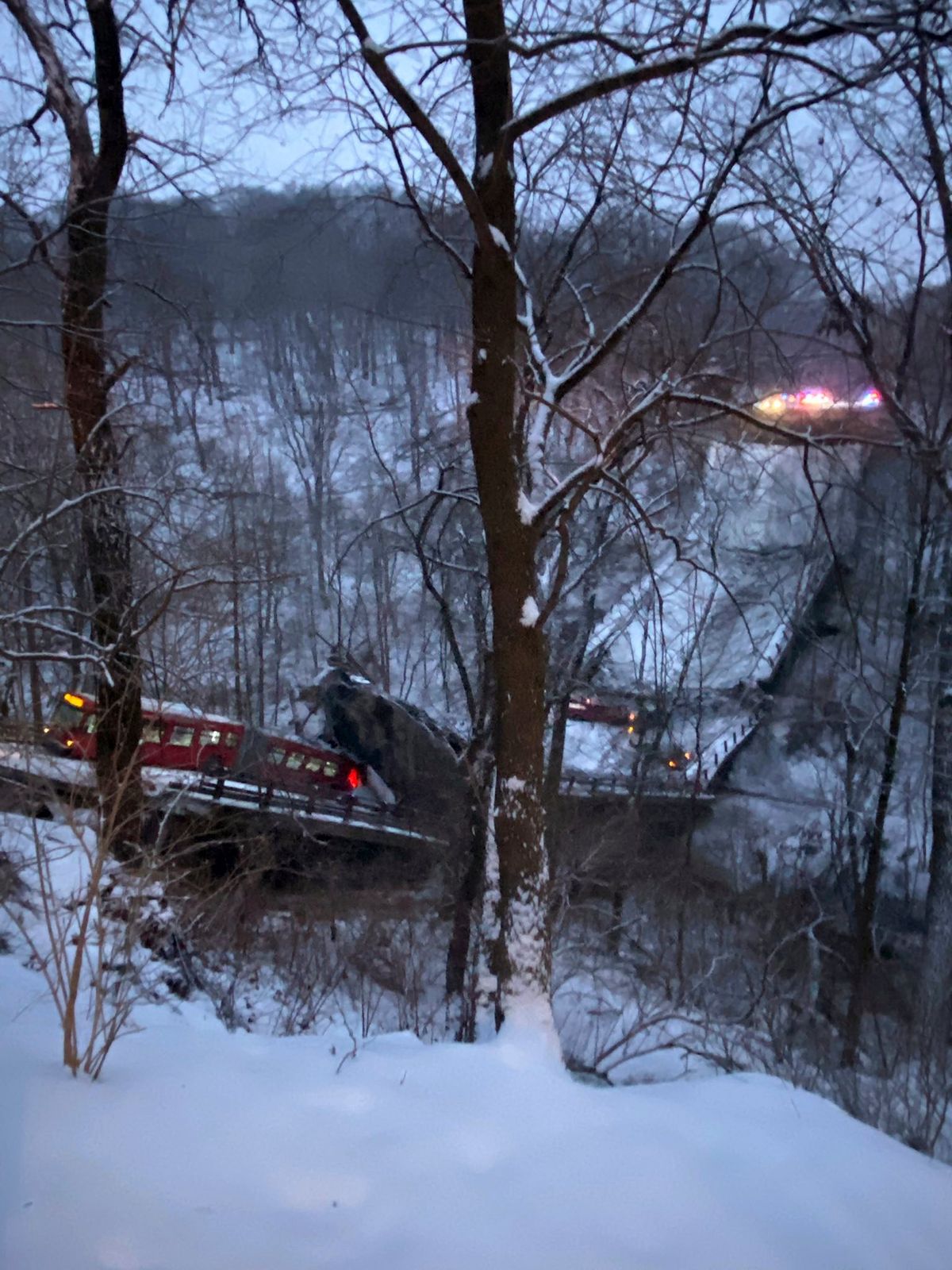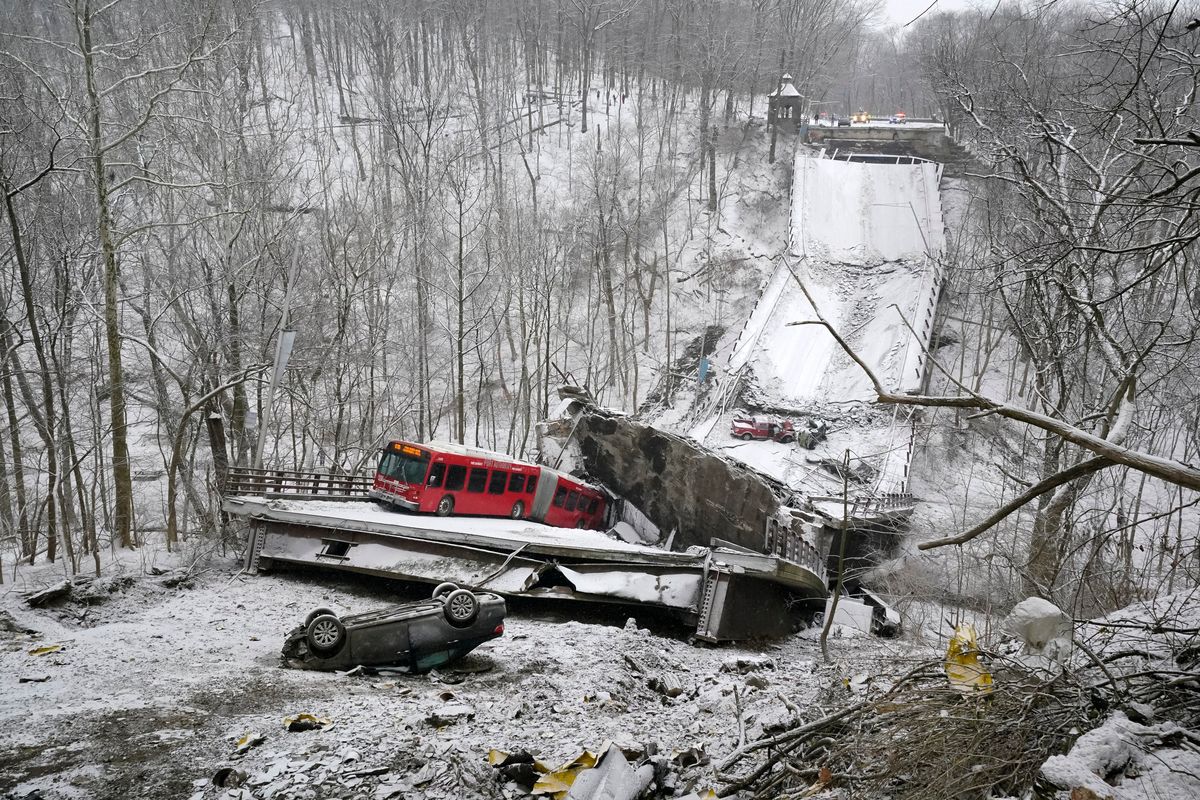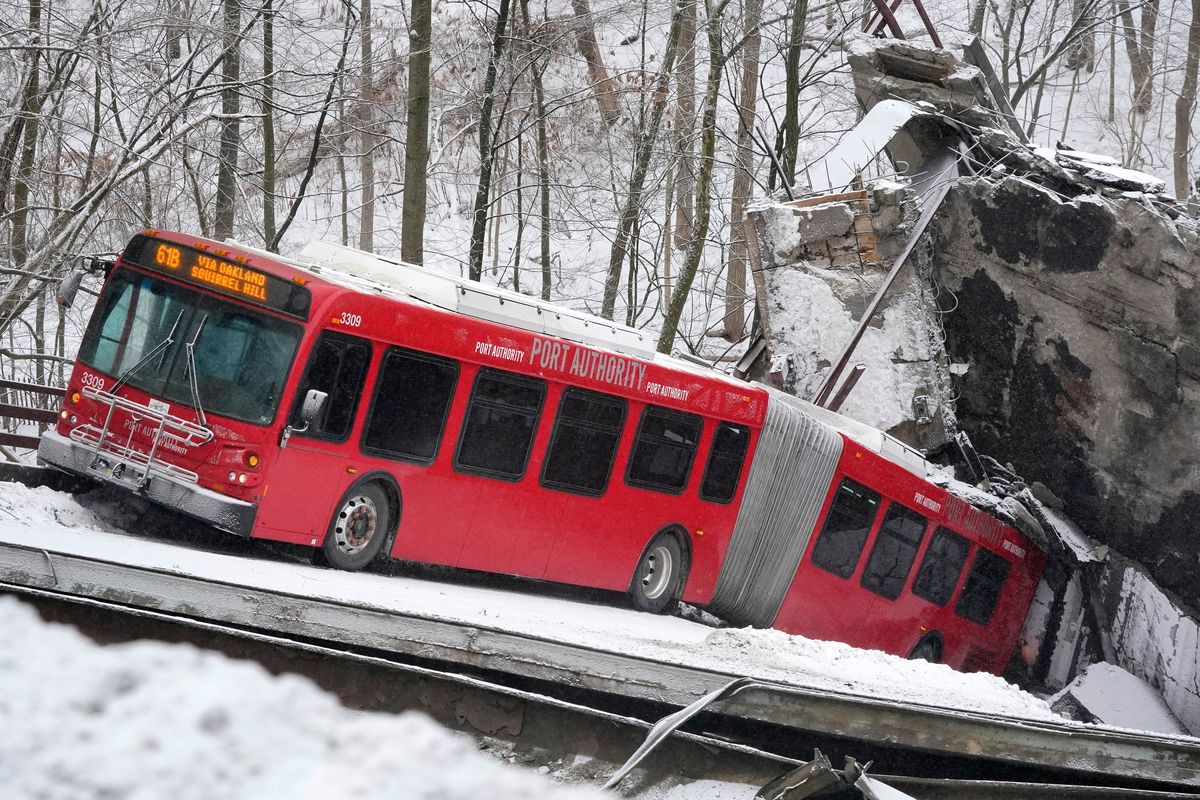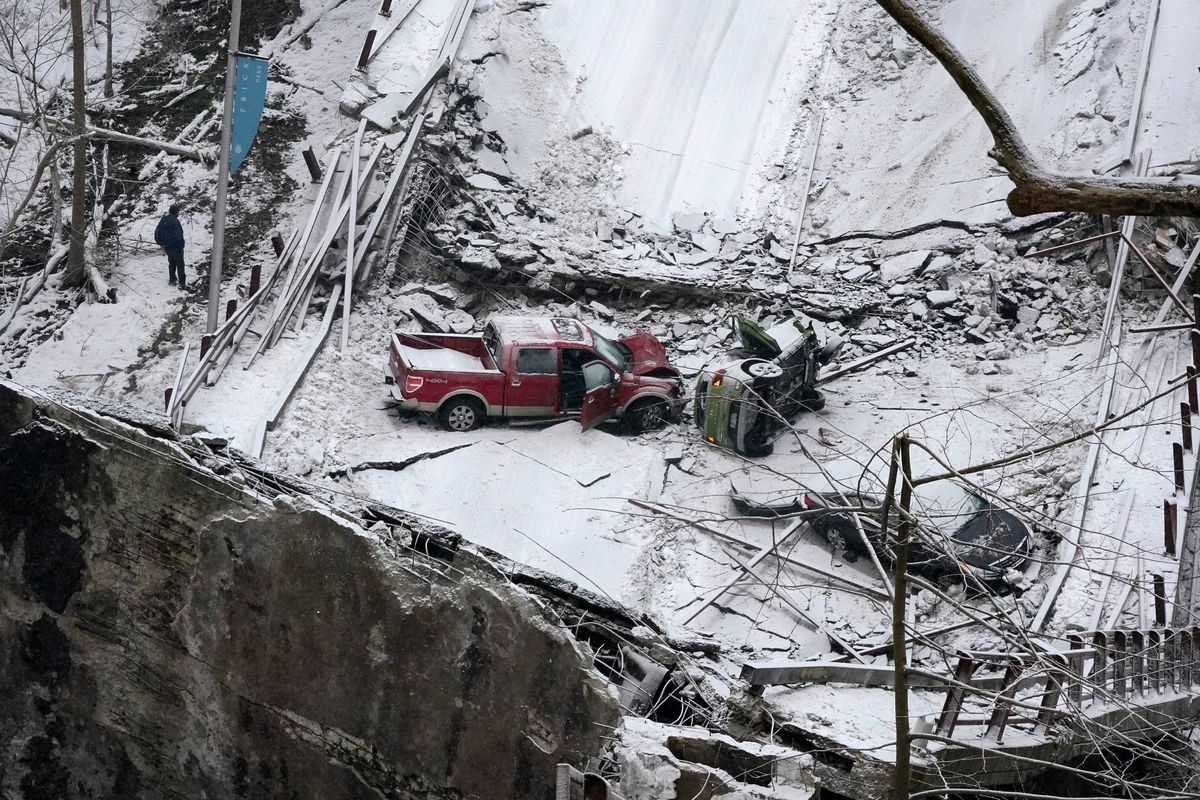Bridge collapses, drops city bus into Pittsburgh ravine
A Port Authority bus that was on a bridge when it collapsed Friday Jan. 28, 2022, is visible in Pittsburgh's East End. A two-lane bridge collapsed in Pittsburgh early Friday, prompting rescuers to rappel nearly 150 feet (46 meters) while others formed a human chain to help rescue multiple people from a dangling bus. (Gene J. Puskar)
PITTSBURGH — A 50-year-old bridge collapsed in Pittsburgh early Friday, requiring rescuers to rappel down a ravine and form a human chain to reach a few occupants of a municipal bus that plummeted along with the span. No deaths were reported.
The collapse came hours before President Joe Biden arrived in the city to promote his $1 trillion infrastructure law, which has earmarked about $1.6 billion for Pennsylvania bridge maintenance.
At least four people required hospital treatment. Five other vehicles were also on the bridge at the time. The cause was being investigated, and crews searched under the debris for additional victims.
A large crack showed on the end of the bridge where the segmented bus landed 150 feet down in the ravine, as if hit by an earthquake. A car landed upside down in front of the bus, which was operated by the Pittsburgh area’s transit agency.
The Forbes Avenue bridge over Fern Hollow Creek in Frick Park came down at 6:39 a.m., city officials said. The loud noise from the collapse was followed by a hissing sound and the smell of natural gas, witnesses said.
“The first sound was much more intense, and kind of a rumbling, which I guess was the structure, the deck hitting the ground,” said Ken Doyno, a resident who lives four houses away. “I mean, the whole house rattled at that point.”
Ruptured gas lines along the bridge produced the leak, and the supply of gas was shut off within a half-hour, city officials said.
As Biden toured the scene, an officer told him a person who was running by helped first responders get people out of cars. He called it a miracle.
“It really is, it’s astounding,” Biden said.
By midafternoon, three adults were being treated, and all were in fair condition, the UPMC hospital system said. A fourth person had received treatment and was released.
The National Transportation Safety Board sent a team to investigate. The agency tweeted a photo late Friday of Chair Jennifer Homendy at the scene.
A search-and-rescue team combed the area, said Sam Wasserman, a spokesperson for Pittsburgh Mayor Ed Gainey. Drones were brought in to help.
Most of the 10 people evaluated for injuries were first responders who were checked for exhaustion or because of the cold and snowy weather, Gainey said.
The segmented bus operated by the Port Authority of Allegheny County had two passengers in addition to the driver, said Adam Brandolph, spokesperson for the agency.
The bus driver, Daryl Luciani, told WPXI-TV that as soon as he reached the bridge, he believed it was collapsing.
“I could just feel it,” Luciani told the station. “The bus was bouncing and shaking and it seems long, but it was probably less than a minute that the bus finally came to a stop, and I was just thankful that nobody on the bus was hurt.”
The passengers appeared to be OK, he said, so he pulled the air brake and waited for help to arrive. First responders reached them after descending with flashlights in the predawn darkness and used a rope to help him and other occupants get to safety, Luciani said.
About two hours after the collapse, Brandolph said, one of the passengers was on another bus, began complaining of injuries and was taken to a hospital. The driver and other passenger were not hurt, according to Brandolph.
The bus had started its route in downtown Pittsburgh and had been heading to the suburban community of Braddock.
“Judging by the time of day, had this bus been traveling inbound, toward downtown, there likely would have been more people on the bus and obviously could have been a much, much more dire situation,” Brandolph said.
The bus had seven or eight cameras, and any footage they captured of the collapse will be part of the investigation, Brandolph said.
Neighbors said a gas company worker went door to door to get them to evacuate from the immediate vicinity before the gas was successfully shut off.
“Apart from just this abiding noise, we could begin to smell gas and that was the truly frightening thing, then with that smell we both said, let’s get dressed and get out of here,” said Lyn Krynski, whose home is nearest the bridge.
“It sounded like a weather phenomenon more than anything,” said Douglas Gwilym, who was shoveling about an inch of snow when he heard the noise. “It was all I had to compare it to — it was this odd, whooshing sound.”
The bridge is an important artery that leads to the Squirrel Hill and Oakland neighborhoods and is a popular route toward downtown Pittsburgh. Authorities told motorists to avoid the area. Several neighbors said a weather-prompted two-hour school delay may have prevented a far worse human tragedy.
At the site of the collapse, Pennsylvania Lt. Gov. John Fetterman called it “just an awful, surreal scene.”
“I hope it’s a wake-up call to the nation that we need to make these infrastructure investments,” Fetterman said.
The steel bridge, which was built in 1970, carries about 14,500 vehicles a day, according to a 2005 estimate.
Wasserman said the most recent inspection occurred in September but the report was not immediately available.
But a September 2019 inspection of the city-owned bridge revealed the deck and superstructure to be in poor condition, according to the U.S. Department of Transportation’s National Bridge Inventory.
A spreadsheet on the state Department of Transportation website listed the bridge’s overall condition as poor, which, according to the Pennsylvania Department of Transportation, means “deterioration of primary structural elements has advanced.”












